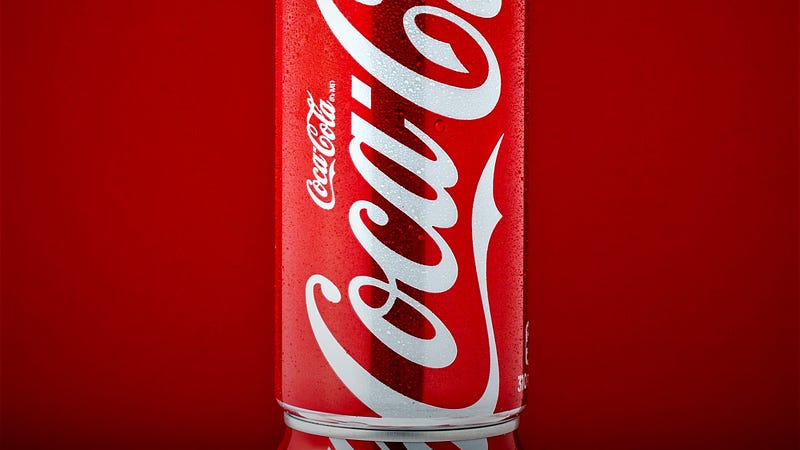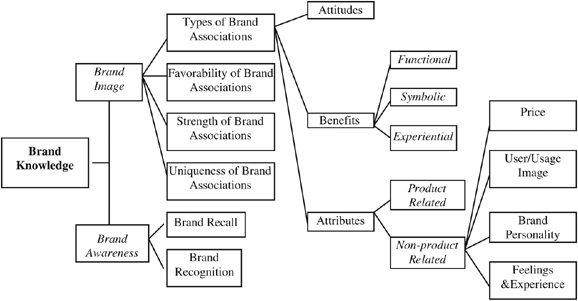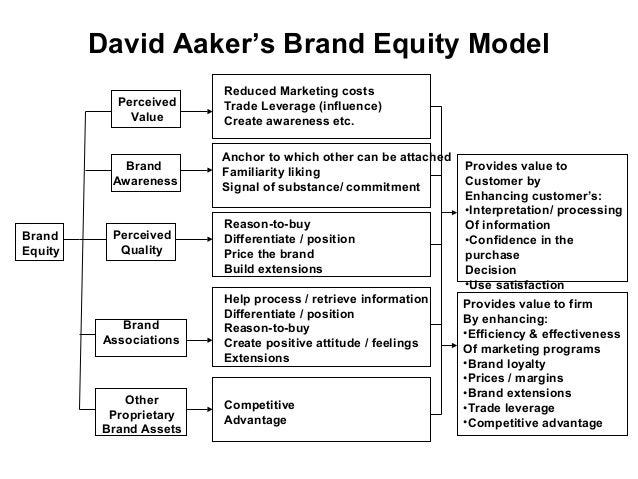The power of branding in the twentieth century is obvious. Brands such as Google, Apple, Nike and McDonalds are globally recognisable and powerful, the only thing that sets them apart from their competitors is the unique connection and loyalty that consumers hold with them.
Interest in the theory of brand equity increased in the late 1980s with a concern that a shifting trend from businesses towards a short-term focus on finances could have a harmful long-term effect on their brand and marketing tactics. There was a realisation that brands are assets to a business, driving business performance over time.
What Is Brand Equity?
Brand equity is the added or subtracted value given to a current or potential product or service, influenced by the brand. It is “the differential effect of brand knowledge on consumer response to the marketing of the brand” (Keller, 1993). Consumers have a perception and desire that a brand will meet their promise of benefits. The higher the perception of value, the higher the premium customers are willing to pay.
 |
| Most people don’t think twice before purchasing Coca Cola |
An elevated level of positive brand equity requires cooperation between the tangible and intangible aspects of a product or service. The intangible aspects come from a customer’s subjective experiences with a brand, the brand’s uniqueness and personality and ability to stay relevant and build a relationship with loyal customers.
“Brands, in their ability to create choice, build trust and loyalty and drive a premium price.” (Interbrand, 2010)
Customers are willing to pay more
Consumers gravitate toward products with great reputations. Brands with strong positive brand equity can generate a premium when compared to a generic equivalent. Customers are more willing to pay a higher price — even if they can get a comparable product or service from a competitor for less.
This is how Apple can charge so much for an iPhone when a comparable alternative can cost less than half the price, yet Apple’s legions of loyal fans will queue outside the store to buy the latest phone on release. If a customer attaches elevated levels of quality or status to a brand, they perceive it as being worth more than alternatives.
This price premium is not limited to consumer products; a study on industrial products (See Bendixena, Bukasaa, & Abratt, 2003) found that the leading industrial brand name could command a price premium of 6.8% over the average industrial brand and 14% over a new and unknown brand. Technical specialists were willing to pay a price premium of up to 26%.
Other benefits of positive brand equity
Besides the benefits of being able to charge a premium price, there are numerous other benefits to having a brand with strong positive equity. Some of the benefits are as follows:
- Higher profit margins because businesses with high brand equity can charge more, but do not incur a higher expense to produce the product or service.
- The brand is more recognisable and trusted, therefore there is increased demand by customers which results in higher sales volumes. Brands are more easily extendable, which means the parent brand can develop a preference and favourable impressions towards their new products or services with their customers.
- Your target market more readily accepts marketing communications due to your existing positive reputation.
- A reduction in new product failure rates and launching costs are lower due to a higher level of brand awareness and trust with their target market.
- Due to the brand reputation of delivering a certain level of quality, customer retention and loyalty is high as consumers like to reduce their risk and simplify their choice.
- A reduction in marketing costs to achieve the same volume as it costs more to acquire new customers than it does to retain existing customers.
- Higher resilience to competitors’ actions as customers is loyal and unlikely to switch. This creates entry barriers to the marketplace for competitors as it is not a profitable market segment for their brand to target.
- A strong brand provides strategic support to a business strategy that will add long-term value to the organization.
- Brands with high equity can have higher marketing budgets to invest back into marketing through their higher profit margins. This helps ensure brand equity remains strong.
 |
| Brands are everywhere you look in big cities |
Customer-based brand equity
Over the years, there has been confusion and disagreement on how to best define measure brand equity. There have been multiple definitions, but they predominantly fit into two distinct categories: customer-based and financial.
“Customer-based brand equity is defined as the differential effect of brand knowledge on consumer response to the marketing of the brand.” (Keller, 1993)
Customer-based brand equity is the most popular conceptualisation of brand equity, introduced by prominent marketing academic Kevin Keller. He defined brand equity as attracting (or repulsing) consumers to (from) a product, generated by the ‘non-objective’ part of the product. It is the added value of a product in a customer’s mind. It is the influence brand knowledge has on consumer response to the marketing of the brand.
Keller’s brand knowledge construct drives brand equity and is made up of three dimensions — brand awareness, brand image, and brand associations. Brand image is a customer’s perception of a product, service or brand. Brand awareness is a consumer’s ability to recognise a brand and recall how they have that knowledge. As you can see above, an individual’s brand knowledge is the combination of their subjective brand awareness and brand image. Brand image should not be confused with brand identity, which is controlled by the firm. Brand image is the customer’s perception of this identity.
See Keller’s brand awareness framework below.
 |
| Kevin Keller’s brand awareness model |
David Aaker is another notable marketing academic who modelled brand equity from the point of view of the customer. He believes recognition is the important driver of brand equity and identified four contributors to brand equity: perceived quality, brand loyalty, brand awareness and brand associations.
Variations of the dimensions the drivers of customer-based brand equity discussed in the literature include reputation, identity, personality, attitude, familiarity, commitment, trustworthiness, loyalty, and performance.
A common characteristic of both Keller’s and Aaker’s model of brand equity is brand associations. Brand associations are anything that creates a positive or negative feeling toward a brand. Marketing aims to create strong, favourable, and unique brand perceptions and associations with a brand that customers remember. It can be based on functional benefits of the product, but often focuses on connecting on an emotional level through a unique brand personality that reflects positive organisational values and social benefits. An individual’s usage experience also influences their brand associations, which is why tangible and intangible aspects of a brand’s products or services must align.
 |
| David Aaker’s brand equity model |
“High brand equity implies that customers have a lot of positive and strong associations related to the brand, perceive the brand is of high quality, and are loyal to the brand.” (Yoo, Donthu, & Lee, 2000)
Relationships build equity
One of the underlying functions of marketing in the 21st century is to form a relationship with customers. Creating a successful relationship contributes to the positive equity existing in a brand, as these customers like and trust you. Brand trust and loyalty strengthen consumers’ investment into the brand by reducing their uncertainty and vulnerability.
A strong brand “increases customers’ trust of invisible products, while helping them to better understand and visualise what they are buying.” (Berry, 2000)
Brand trust is the willingness of a customer to rely on a brand to meet their expectations of function utility. This requires time and experience between the two parties, but trust plays an important mediating role in the creation of equity and value in a brand.
Brand loyalty is a commitment from a customer to consume a preferred product or service consistently and repeatedly into the future, despite situational influences and the marketing efforts of competitors having the potential to cause switching behaviour. Customers that believe in the value of a brand often will not spend time appraising cheaper options with lower prices.
Marketing’s role in creating equity
Companies can create brand equity by making products and services memorable, easily recognisable, and superior in quality and reliability. Marketing is a major driver of brand equity through differentiating products from competing brands. Marketing builds strong brand equity through influencing the brand associations held in a consumer’s mind. Enhance the strength of your brand by investing in advertising and resist often discounting products; as this has been shown to create negative brand equity for businesses, as customers are less willing to pay a premium price if they know it is often sold much cheaper.
“Brand equity is developed through enhanced perceived quality, brand loyalty, and brand awareness/associations; which cannot be either built or destroyed in the short run but can be created only in the long run through carefully designed marketing investments.” (Yoo, Donthu & Lee, 2000)
Create a personality for your brand expressed through your marketing mix. The connection a consumer feels with your brand’s personality can define your relationship with customers. Creativity helps develop a unique brand differentiated from competitors. Marketing communications should also be consistent in the long-term, from messages to the visual identity. The marketing mix should also always be relevant to the target customer and your brand image. Stay true to the brand.
The brand equity model below from Yoo, Donthu & Lee (2000) is a good illustration of how marketing contributes to the brand equity process.
 |
Brand equity as the financial value
The second popular definition of brand equity is based on measuring the financial value of a brand. The value added to a product or service by its brand name compared to an unbranded alternative.
Marketers in the 1980s started to realise that certain brands offered considerable added value to products. They saw brand equity as a durable and sustainable asset to a business and wanted a way to estimate the unique value of each brand. One of the formulas introduced to estimate a brands value is by taking the value of the firm and subtracting the tangible assets and “measurable” intangible assets. The remaining value is the firm’s financial brand equity. This measure used at the macro (market) level, to put a monetary value on a brand for resale purposes. There are also measures for brand equity at a micro or product level, which allowed firms to observe the value of individual brands by isolating changes in brand equity by measuring its response after major marketing decisions.
As the financial method offered limited use to helping set marketing strategies to grow strong brands, researchers preferred the customer-based approach. The brand value was starting to be explored as a concept at around the same time, and researchers began to realise that taking a financial viewpoint to brand equity was confused the topic with brand value, and the two should be kept separate.
 |
| Brand equity can be measured as the financial value of a brand |
Brand value or brand equity?
An uncomplicated way to separate the two is that brand equity what a brand does for a customer, while the brand value is what it does for the business. Brand value is the financial worth of the brand. Many marketing academics consider Interbrand to be the world’s most reputable brand valuator (see Chu & Keh, 2006), and each year they publish a list of the world’s most valuable brands.
There are three key components to Interbrand’s methodology for brand valuations:
· Analysing the financial performance of the products or services — the economic profit measured as “the after-tax operating profit of the brand, minus a charge for the capital used to generate the brand’s revenue and margins.”
· The role the brand plays in purchase decisions — the portion of the purchase decision attributable to the brand as opposed to other factors.
· The brand’s competitive strength — the ability of the brand to create loyalty and, therefore, sustainable demand and profit into the future
That is it for this week's blog. I hope you enjoyed this week’s content about brand equity. Make sure you keep creating quality marketing content around your brand to increase your brand equity!
See you next week,
Dan

No comments:
Post a Comment